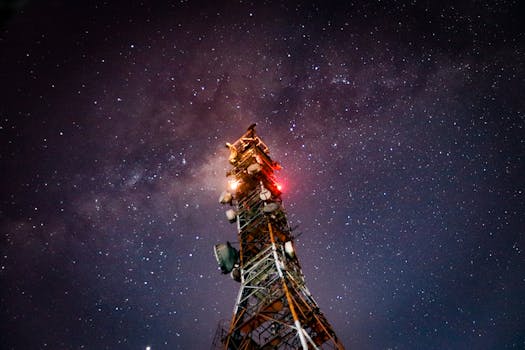
MEO Satellites: The Future of Global Communication
MEO satellites, or Medium Earth Orbit satellites, are a type of satellite that operates at an altitude of around 2,000 to 36,000 kilometers above the Earth’s surface. This is in contrast to Geostationary Earth Orbit (GEO) satellites, which orbit at a much higher altitude of around 36,000 kilometers. The lower altitude of MEO satellites allows for faster and more reliable communication, making them an attractive option for a wide range of applications, including telecommunications, navigation, and Earth observation.
The use of MEO satellites has been increasing in recent years, driven by the growing demand for global connectivity and the need for faster and more reliable communication. One of the main advantages of MEO satellites is their ability to provide high-speed data transfer rates, making them ideal for applications such as video conferencing, online gaming, and cloud computing. Additionally, MEO satellites have a lower latency than GEO satellites, which means that data can be transmitted and received more quickly, resulting in a more responsive and interactive experience for users.
How MEO Satellites Work
MEO satellites work by transmitting and receiving data to and from Earth stations, which are equipped with large antennas and other specialized equipment. The satellites use a range of frequencies, including Ka-band, Ku-band, and C-band, to transmit data, and they are typically powered by solar panels or other forms of renewable energy. The satellites are also equipped with advanced propulsion systems, which allow them to maintain their orbit and adjust their position as needed.
The use of MEO satellites requires a network of Earth stations, which are used to transmit and receive data to and from the satellites. These Earth stations are typically located in remote areas, such as mountains or deserts, where they can operate without interference from other sources of radio frequency radiation. The Earth stations use large antennas to communicate with the satellites, and they are equipped with advanced computer systems and other specialized equipment to manage the flow of data.
Applications of MEO Satellites
MEO satellites have a wide range of applications, including telecommunications, navigation, and Earth observation. In the telecommunications sector, MEO satellites are used to provide broadband internet access, voice and video communications, and other services to remote and underserved areas. They are also used to provide backup connectivity in case of outages or natural disasters, and to support the operation of critical infrastructure such as emergency services and financial networks.
In the navigation sector, MEO satellites are used to provide location-based services, such as GPS and other satellite-based navigation systems. These systems use a network of satellites to provide location information to users, and they are used in a wide range of applications, including aviation, maritime, and land transportation. MEO satellites are also used in the Earth observation sector, where they are used to collect data on the Earth’s environment, climate, and natural resources.
Benefits and Challenges of MEO Satellites
The use of MEO satellites offers a number of benefits, including faster and more reliable communication, lower latency, and higher data transfer rates. They also offer a more secure and resilient form of communication, as they are less susceptible to interference and outages than traditional terrestrial networks. However, the use of MEO satellites also presents a number of challenges, including the high cost of launching and operating the satellites, the need for specialized equipment and expertise, and the potential for interference and congestion in the radio frequency spectrum.
Despite these challenges, the use of MEO satellites is expected to continue to grow in the coming years, driven by the increasing demand for global connectivity and the need for faster and more reliable communication. As the technology continues to evolve, we can expect to see new and innovative applications of MEO satellites, including the use of constellations of small satellites to provide global coverage and the development of new frequency bands and transmission protocols to support the growing demand for data transfer.



